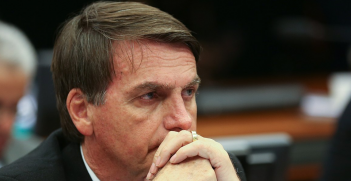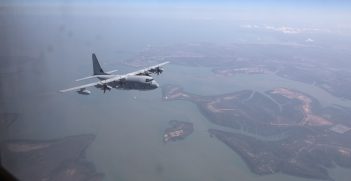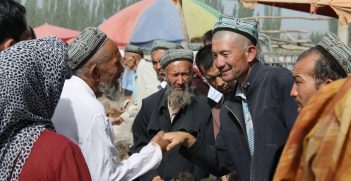Human Rights, Nuclear Security and the Question of Engagement with North Korea

To inch towards the total denuclearisation of North Korea, we should perhaps frame the North’s nuclear threat as a threat against human rights.
Throughout 2017 – Trump’s first year in office – we witnessed rising tensions between North Korea and the United States. North Korea continued to test ballistic missiles throughout the year, and conducted its largest nuclear test to date. The year progressed with a fiery exchange between Trump and North Korean leader Kim Jong Un. Trump promised to rain “fire and fury” down on North Korea, deriding Kim as “rocket man.” In turn, Kim warned that Trump would “face results beyond his expectation,” and that North Korea “will surely and definitely tame the mentally deranged US dotard with fire.”
Fast forward to late 2018. Following the Singapore summit between the two leaders in June, Trump has declared that he has “fallen in love” with Kim Jong Un. Even before the latest ratcheting of tensions on the nuclear front, North Korea was hitting international headlines for all the wrong reasons. For the past several years, North Korea has faced international criticism for its human rights abuses. From the perspective of human rights activists, the question of “how do you solve a problem like North Korea” can only be addressed if the “problem” is defined as the threat the state poses to its own people. The closed nature of North Korea means that states have very little capacity to unearth reliable information about human rights in North Korea and in this regard have relied heavily on a transnational advocacy network. The activists, defectors and other actors that comprise this network have collated a wide array of evidence about human rights violations inside North Korea, and have been at the forefront of informing and shaping policy.
The closed nature of North Korea means that states have very little capacity to unearth reliable information about human rights in North Korea and in this regard have relied heavily on a transnational advocacy network. Policy-makers, of course, have been preoccupied with the North Korean nuclear issue. Thus, the central challenge for human rights advocates is determining whether human rights responses should be siloed from, or linked with, the denuclearisation issue.
Following months of nuclear testing and rhetorical warfare that characterised 2017, President Trump made the case for the linkage of human rights and security concerns during his 2018 State of the Union address. North Korean defector and human rights activist Ji Seong Ho was a guest of honour at the Address, and the President recounted Ji’s harrowing story, arguing: “we need only look at the depraved character of the North Korean regime to understand the nature of the nuclear threat it could pose.”
It is helpful to think about these different interpretations of US policy towards North Korea through the lens of change. Those who advocate the latter form of engagement and dialogue tend to believe that North Korea is capable of change and, given the appropriate set of incentives, can be convinced to give up its nuclear weapons; or at least, to downgrade their capabilities and improve relations with the US to the point where it no longer poses an immediate and existential threat. Conversely, those who take the position that North Korea is incapable of change and will never willingly give up a military advantage against the United States and South Korea instead argue that North Korea will only respond to coercion. The problem, from this perspective, is not a set of circumstances that have led North Korea to behave in a particular way, but rather with the North Korean regime itself; as long as the North Korean state exists in its current political configuration, it will always pose an existential threat to the US and its allies.
We propose three approaches that would allow for nuclear threats to be framed as a human rights issue in North Korea. The first of these is a legal/institutional approach, which uses international law, sanctions and diplomacy to nudge the regime towards compliance with international human rights standards. This top-down approach is most effective when conversations with North Korean officials about human rights are adapted to resonate with the local context. That is, we know that when it comes to talking to North Korea, human rights language frequently has an inflammatory effect and tends to result in diplomatic paralysis rather than productive dialogue. We all need to be talking the same language and, without compromising human rights standards, human rights are more likely to be successfully diffused within an authoritarian context if they resonate with local norms and understandings.
A second approach which seeks to effect change from the bottom-up deploys subversive tactics. This more direct, “hands-on” approach, seeks to bypass the North Korean regime’s information blockade and reach the people on the ground, by smuggling in information via USB flash drives, SD cards and DVDs downloaded with South Korean dramas, Western films and documentaries; by launching balloons across the demilitarised zone in an effort to distribute information leaflets or contraband goods; or by broadcasting real-time content and foreign news into the country via short-wave radio. The same lesson around contextualisation of human rights language described above in the context of top-down approaches is also relevant here and we know that information campaigns are more likely to be successful if they adopt the discourse of the target audience. Indeed, the greatest strength of radio stations run by North Korean defectors is that they are able to communicate not only in the appropriate vernacular, but adopt the style and cadence of broadcast communication peculiar to the North Korean context
Finally, while rarely framed in the language of human rights and usually seen through the lens of humanitarian engagement, a third strategy focuses on social and economic rights, including the right to food, shelter, and health care; the United Nations COI Report explicitly includes “the right to food and related aspects of the right to life,” as a core aspect of North Korean human rights. Notwithstanding the significant logistical boundaries that justify the separation of humanitarian work from human rights advocacy, such as access to populations and formal relationships with North Korean stakeholders, the COI’s inclusion of food rights in its findings has narrowed the gap between the two communities. As human rights expert Roberta Cohen has argued, the inclusion of human rights in the UN’s Strategic Framework for the DPRK would grant humanitarian organisations “an entry point for raising with North Korean authorities the human rights principles the DPRK itself accepted at the UN’s Universal Periodic Review in 2014.”
The binary debate over the inclusion of human rights issues in security dialogue that we witnessed among pundits at the time of the Singapore summit misleadingly suggests that the international community faces a stark choice. A closer look, however, reveals different options and greater nuance in how policymakers might advance human rights. Human rights change is not linear. Neither should be the strategies that we adopt.
Dr Danielle Chubb is senior lecturer in International Relations and a member of the POLIS group in the Alfred Deakin Institute for Citizenship and Globalisation at Deakin University.
Dr Andrew Yeo is an associate professor of politics at The Catholic University of America in Washington, DC. He is co-editor of North Korean Human Rights: Activists and Networks, published in 2018 with Cambridge University Press.
This article is an extract from Chubb and Youde’s article in the Australian Journal of International Affairs titled, “Human rights, nuclear security and the question of engagement with North Korea.” It is republished with permission.





